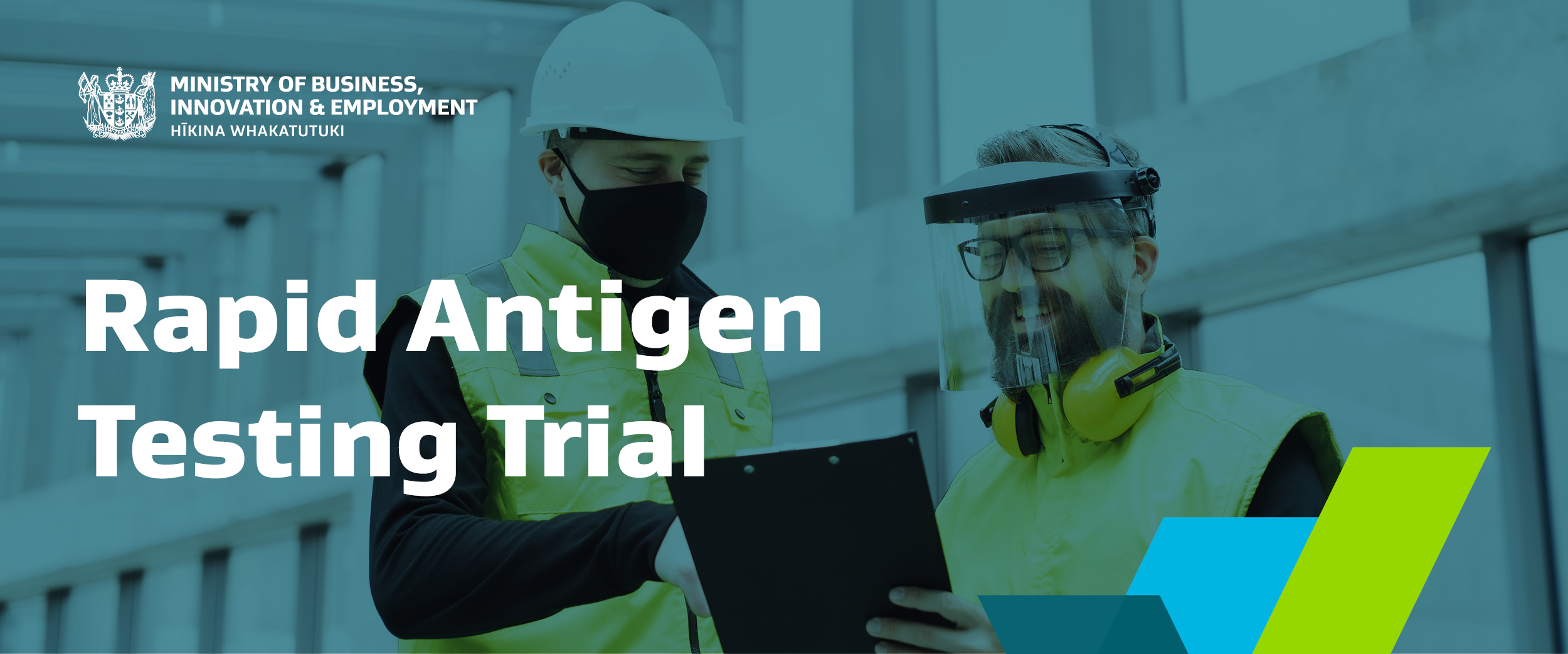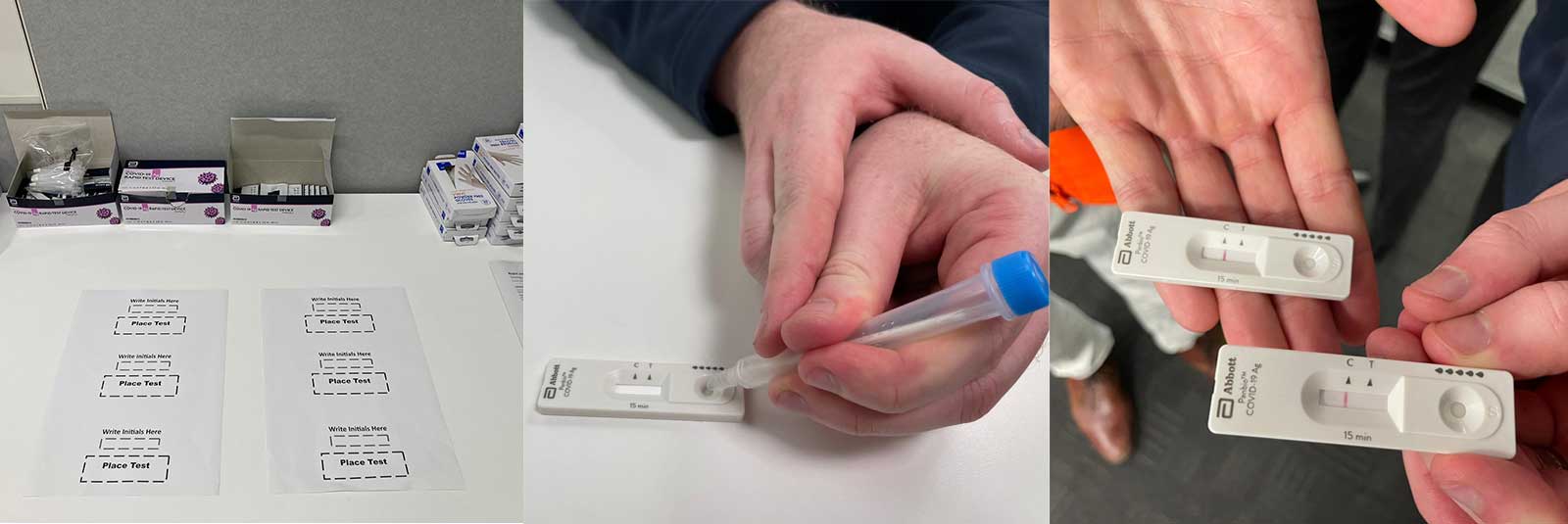Lessons learnt from Rapid Antigen Testing Trial
Published: 01 December 2021
The 5 week rapid antigen testing trial was used to garner learnings and feedback from 29 New Zealand businesses to inform a wider national roll-out as part of the country’s response to COVID-19.
On this page

These businesses came together to support their people and manage their health and safety obligations, signed up to a Charter, agreed to Standard Operating Procedures and then imported approved tests within a matter of days of the trial starting.
Ministry of Business Innovation and Employment (MBIE) led the trial, with support from the Ministry of Health (MoH). Together the agencies worked with businesses to build and refine testing processes and evaluate how tests could help businesses to manage COVID-19 risk in the workplace. A significant amount of qualitative and quantitative data was collected to help MBIE and MoH, iron out and fix issues in real time. By the end of November more than 23,000 rapid tests had been administered providing valuable learnings and insights, an ultimate testament to the success of the trial.
Key learnings
During this process, the following 5 key learnings were identified for the successful introduction of rapid antigen testing in the workplace:
- Process is paramount: establish clear processes, and continuously adapt and improve.
- The tests were well-received: The more shallow nasal test method and the ability to self-administer the test made workers feel more comfortable and in control.
- Open spaces are conducive: Testing in larger spaces allowed quick processing while maintaining COVID-19 safety protocols.
- Effective communication is key: Clear and timely communication about why and how rapid antigen testing was being implemented helped staff feel positive about the experience.
- Have a common objective: Staff responded well to rallying around the objectives of keeping each other and their families safe, as well as helping to ensure business continuity so they could keep coming to work.
The businesses also shared their observations of what worked well for them:
- Having clear communications to staff was beneficial. We also chose not to mandate testing, but instead explain the benefits of testing. Because of this we saw very little resistance from staff.
- Have processes and procedures in place before you start. This is critical to provide a level of comfort for staff schedule and being organised is critical. Make sure you have enough people to supervise the process.
- Be flexible in your approach. Changing process depending on different work areas should be encouraged.
- Testing was excellent as a surveillance tool, which is great to make staff feel comfortable in the workplace.
- It’s not as hard as it looks. There was some work to get initial buy-in from staff, but once they tried the tests they were fine to continue.
- Be prepared for the process to be on-going. Be clear on why you’re doing it and decide if it is the best tool for your business.
Most businesses began their planning by identifying the purpose of undertaking Rapid Antigen Testing within their broader health and safety plan. For some businesses, this meant using testing as a surveillance tool to identify COVID cases within their workforce. For others, it was used for visitors to a work site to identify people who may have COVID before they entered.
How testing was designed varied based on the location businesses used for testing. For those undertaking testing at home, planning needed to consider the time employees spent doing the test before their shift, how they disposed of used tests, and how the test result was recorded and shared. For those testing on a work site, planning needed to consider how to manage people arriving, getting tested, and waiting for results. It also needed to consider how to maintain privacy, how to identify who took what test, and disposal of used test kits.
A number of businesses looked to others in their sector who have used similar processes or experiences of similar businesses overseas (for example in Australia) to learn what processes worked best.
Overall the businesses involved in the trial learned a lot, adapted as they saw fit and kept communicating with their staff. They shared their experiences openly, and often took ideas from the other businesses. While there were a few bumps along the way, all of the businesses reported that they adapted quickly and reviewed processes as they needed to. They were all happy with the outcome of the trial, and have committed to continuing to share their experience with MoH for the coming month or so. At the end of the trial, 23,285 tests had been administered, with 14 positive results and 96 invalid results.

Rapid antigen tests in their boxes, somebody taking a sample and people showing their rapid antigen test results.
MBIE media contact
Email: media@mbie.govt.nz
https://www.mbie.govt.nz/about/news/lessons-learnt-from-rapid-antigen-testing-trial
Please note: This content will change over time and can go out of date.

